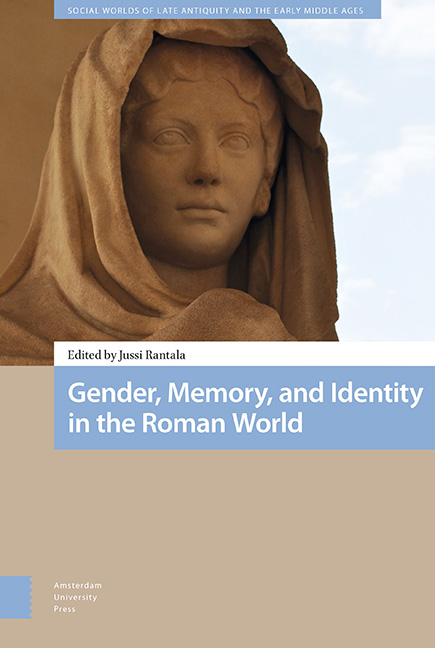Book contents
- Frontmatter
- Contents
- List of Illustrations
- Abbreviations
- Preface
- Tabula Gratulatoria
- Introduction
- 1 Public Agency of Women in the Later Roman World
- 2 Religious Agency and Civic Identity of Women in Ancient Ostia
- 3 The Invisible Women of Roman Agrarian Work and Economy
- 4 ‘Show them that You are Marcus’s Daughter’
- 5 Defining Manliness, Constructing Identities
- 6 ‘At the Age of Nineteen’ (RG 1)
- 7 Conflict and Community
- 8 Dress, Identity, Cultural Memory
- 9 The Goddess and the Town
- 10 Varius, multiplex, multiformis – Greek, Roman, Panhellenic
- 11 Mental Hospitals in Pre-Modern Society
- Index
3 - The Invisible Women of Roman Agrarian Work and Economy
Published online by Cambridge University Press: 20 November 2020
- Frontmatter
- Contents
- List of Illustrations
- Abbreviations
- Preface
- Tabula Gratulatoria
- Introduction
- 1 Public Agency of Women in the Later Roman World
- 2 Religious Agency and Civic Identity of Women in Ancient Ostia
- 3 The Invisible Women of Roman Agrarian Work and Economy
- 4 ‘Show them that You are Marcus’s Daughter’
- 5 Defining Manliness, Constructing Identities
- 6 ‘At the Age of Nineteen’ (RG 1)
- 7 Conflict and Community
- 8 Dress, Identity, Cultural Memory
- 9 The Goddess and the Town
- 10 Varius, multiplex, multiformis – Greek, Roman, Panhellenic
- 11 Mental Hospitals in Pre-Modern Society
- Index
Summary
Abstract
This contribution discusses work hierarchies and gender structures in Roman agricultural economy and production. It is largely based on agricultural texts, starting with Cato the Elder, and the focus is on female work roles and identities. It will be argued that textile production was an essential part of the agrarian economy and that it was mainly the responsibility of women. The evidence of work identities of Roman women is more limited than those of men, especially for those outside urban contexts. This has made rural women largely invisible to a modern reader but more information can be added by using material evidence more firmly. This chapter is an attempt to discuss possibilities of identifying female work roles in agricultural contexts.
Keywords: agrarian economy, memory, female invisibility, textile production, women's work identity
Introduction
Working people constituted the vast majority of the population in the Roman world and as such they have largely been neglected by ancient writers and modern scholarship alike until quite recently. The relative invisibility of working groups is one of several biases in ancient sources, another is the lesser grade of visibility for women compared to that of men. The relative invisibility of Roman women was pointed out by Moses Finley in a paper already in 1965 (‘The Silent Women of Rome’). This is especially true for female workers where a gender discrepancy is clearly demonstrated in the documentation of male and female work. In spite of a rich body of evidence of Roman job titles, comprising thousands of epigraphic instances, relatively few female jobs occur there: the evidence more clearly documents male work and occupations. The sources, however, display some shades of female invisibility based on agents such as geography and social class.
Information about Roman jobs comes mostly from the epigraphy of urban contexts which in turn has formed the basis for several studies in modern scholarship concerning Roman occupations, work organisation, and professional identities in primarily urban centres.
- Type
- Chapter
- Information
- Gender, Memory, and Identity in the Roman World , pp. 89 - 104Publisher: Amsterdam University PressPrint publication year: 2019
- 1
- Cited by

